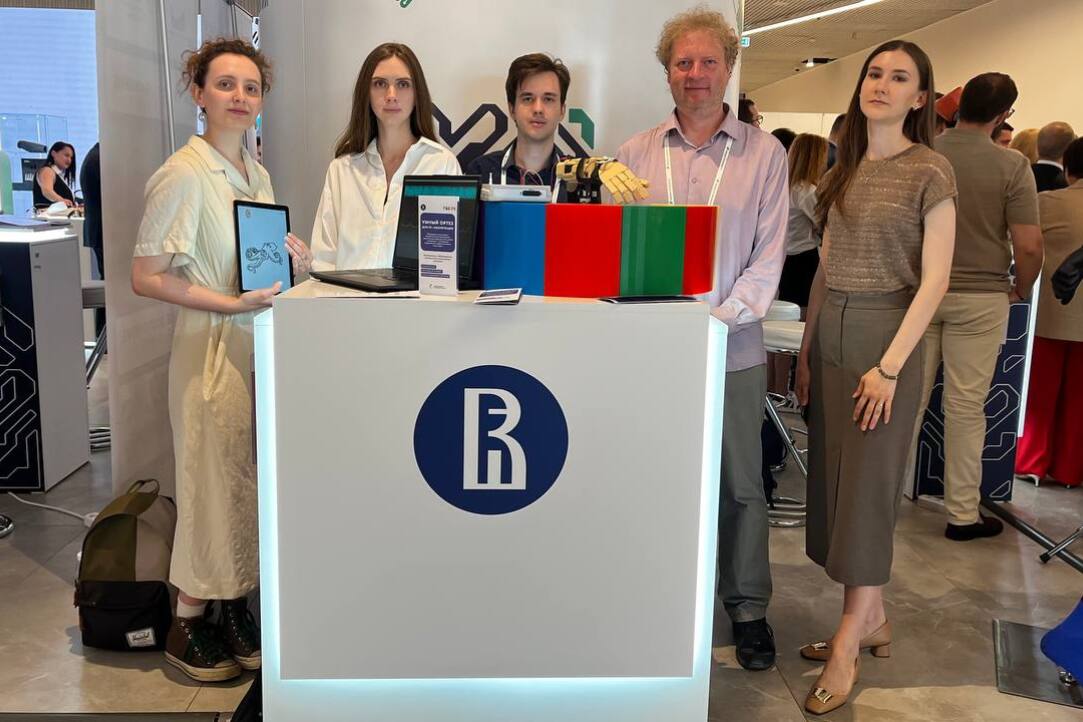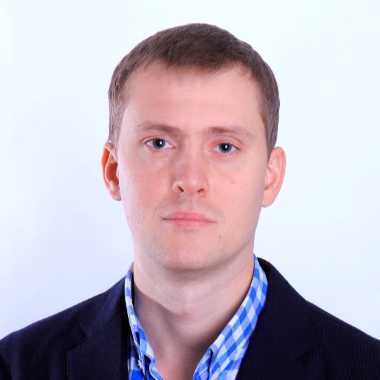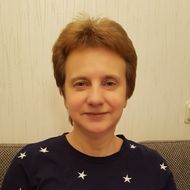HSE University Presents Smart Orthosis at Hope for Technology Forum

On July 10–11, 2025, Moscow hosted the 10th Hope for Technology National Forum of the Rehabilitation Industry and Universal Design. The event was aimed at discussing innovative achievements in the rehabilitation industry. The MIEM Student Design Bureau and the HSE Institute for Cognitive Neuroscience presented a smart orthosis, which was developed at the request of orthopedists.
The Smart Orthosis project is a comprehensive rehabilitation system geared towards helping in the development of motor activity in patients (primarily children) who experience difficulty bending their arm at the elbow joint. The system operates on the basis of an electromyographic signal (EMG). The developers guarantee an individual approach with automatic personal adjustment to the individual characteristics of the patient. This development solves several rehabilitation problems at once: it increases the effectiveness of surgical intervention, reduces dependence on third parties (psychologists, parents) in existing rehabilitation programmes, and improves the ability to monitor the recovery process.
Evgeny Blagoveshchensky, Leading Research Fellow at the Centre for Cognition & Decision Making of the Institute for Cognitive Neuroscience, notes that the idea to develop an orthosis arose following the request of orthopedists as a result of cooperation between HSE University and the G. Turner National Medical Research Center for Pediatric Orthopedics and Trauma Surgery of the Ministry of Health of the Russian Federation. ‘In Russia, rehabilitation processes are often standardised, and personal programmes are an exception. Initially, we tried to find ready-made solutions, but they were unavailable even on the global market. This prompted us to create our own solution. Thanks to specialists from the MIEM Design Bureau, we managed to create the first prototype, which was presented at the exhibition. It is an exoskeleton with assistive functions that can adapt to the patient's needs. We hope to put it into production soon,’ adds Blagoveshchensky.

The orthosis consists of a mechanical exoskeleton, software, a biofeedback system, a digital gaming platform, and myography sensors. The intelligent system will analyse the patient's movements and adjust to them, providing fixation in the hand and biceps area and precise movement control.
The project was well received by forum guests and Minister of Industry and Trade Anton Alikhanov, who expressed interest in the implementation of the product and its potential for further application in daily practice.

Dmitry Kovalenko
Dmitry Kovalenko, HSE University Vice Rector and Director of HSE MIEM, says that the renewed Student Design Bureau at MIEM is intended to become an innovative hub for supporting student design developments aimed at further widespread implementation. ‘This means comprehensive organisational, methodological and substantive support, as well as the development of optimal models for the institute's interaction with partner companies and customers. The smart orthosis is the first step, a kind of pilot project. It’s great that it was highly praised by experts in science and the real sector,’ he adds.
During the forum, specialists from the MIEM Student Design Bureau and the HSE Institute for Cognitive Neuroscience held talks with representatives of potential partner companies of the project.

Ilya Ivanov
Ilya Ivanov, Leading Research Fellow at the School of Electronic Engineering of the HSE Tikhonov Moscow Institute of Electronics and Mathematics and Head of the MIEM Design Bureau, comments: ‘We consider healthcare to be one of our current priorities. It’s a huge field for the application of AI technologies. Our students are happy to participate in such projects, both because there are many truly non-trivial and creative tasks, and because these tasks are aimed at achieving perhaps the most worthwhile goals—preserving human health and helping with rehabilitation.’

Veronika Prokhorova
Veronika Prokhorova, MIEM's Deputy Director for Project Work, notes that the MIEM Design Bureau, where students implement technological product projects, has already established fruitful partnerships with large manufacturers of various modern equipment, as well as among leading HSE departments. ‘We value these partnerships and hope to present other developments of the design bureau in the near future,’ adds Prokhorova.
For more news about the activity of the HSE MIEM Design Bureau, please see the official Telegram channel (in Russian).
About the Hope for Technology Forum
The forum was held on July 11–12 in Moscow at the Lomonosov Cluster of the Moscow State University Innovation Centre. The participants, including leading experts in the field of healthcare, rehabilitation technologies, representatives of ministries, government agencies, and large equipment manufacturers, had an opportunity to learn more about advanced developments and integrated solutions aimed at creating a barrier-free environment, as well as the latest technological solutions designed to make life easier for people with disabilities and limited mobility.
See also:
HSE Students to Develop Energy-Efficient IoT Devices in Cooperation with MTS
HSE University and MTS have launched a joint project to develop IoT devices (NB-IoT) within the framework of the Internet of Things and Cyber-Physical Systems Master’s Programme and as part of the project activities undertaken by students of HSE’s Tikhonov Moscow Institute of Electronics and Mathematics. Students will have access to the equipment and the network in order to develop energy-efficient devices, while their professors will be provided with expert and advisory support from the MTS specialists.
MIEM HSE’s Annual Technoshow Will Be Held Online
On May 31, MIEM students will present their projects at the Institute’s annual exhibition, which this year will be held online. Of 200 team projects created at the Institute this past academic year, the expo will feature the 25 most brilliant and successful, both in terms of innovation and practicality.
'It’s Obvious a Scientist Can Make Money in the Sphere of Innovations'
Science had already moved into the sphere of consumption in the 20th century, and we now treat technological innovation as if it’s simply a new item on a restaurant menu or the premier of the latest blockbuster film. Science works for everyone personally, and this ‘scientific marketing’ is the merit of new-era scientists – the ‘Steve Jobses’ who are capable of not only inventing, but also selling their inventions. Alexey Rolich, who is a graduate of HSE MIEM, the head of the 3D Visualization Laboratory, and the creator of the Public Charger project, which has received an UMNIK grant, tells Success Builder how to make money in science.
Conference at HSE to Focus on Plans for Developing Science and Technology over Next Decade
On November 6-7, 2014, the Higher School of Economics will hold the IV International Academic Conference ‘Foresight and STI Policy’.


